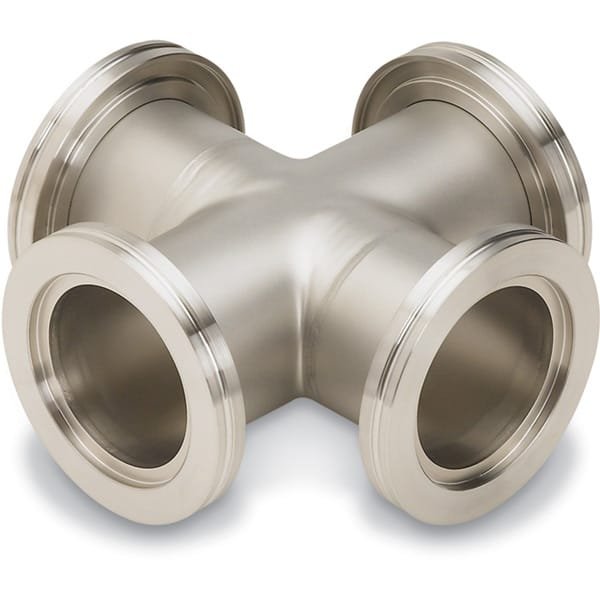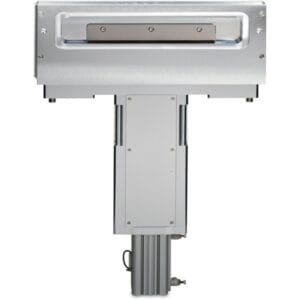5-Way Crosses (ISO-K HV): High-Vacuum Connectivity with Optimized Port Versatility
5-Way Crosses (ISO-K HV) from TFM are precision-fabricated vacuum components that provide five orthogonally positioned ISO-K flange ports in a single, compact structure. Designed for use in high-vacuum (HV) systems, these crosses offer flexible multi-port access for integrating pumps, gauges, valves, feedthroughs, and chamber connections.
Constructed from high-grade 304L stainless steel tubing and built to meet ISO standards for Large ISO flanges, these 5-way crosses feature ISO-K clamp-style flanges that allow fast and secure assembly using centering rings, elastomeric o-rings, and quick clamps. Their geometry is ideal for systems requiring maximum component integration within a confined footprint.
Key Features of 5-Way Crosses (ISO-K HV):
304L Stainless Steel Construction
Offers excellent strength, corrosion resistance, and thermal stability—ensuring compatibility with aggressive gases and high-vacuum bakeout conditions.Five ISO-K Flanged Ports
All five ports are machined to ISO-K standards, enabling universal compatibility with ISO hardware and accessories, and supporting vacuum seals down to 10⁻⁸ Torr.Efficient Multidirectional Configuration
The 5-port geometry provides a central connection hub with multiple access points—ideal for attaching pumps, sensors, gas inlets, and chamber extensions.Vacuum-Ready Finish
All welds are helium-leak tested and internally cleaned for vacuum compatibility, minimizing contamination and outgassing.Standard and Custom Sizes
Available in ISO standard sizes such as ISO63, ISO100, ISO160, and ISO200, with the option for custom flange sizes, tube lengths, and port orientations tailored to your system design.
Typical Applications of ISO-K HV 5-Way Crosses:
Pump and instrumentation hubs in HV chambers
Gas distribution or exhaust branching
Integration of viewports, pressure transducers, and feedthroughs
Modular vacuum system prototyping or expansion
Central junction nodes in UHV-compatible research setups
TFM also supplies all necessary ISO-K compatible hardware including aluminum/stainless clamps, FKM or Buna o-rings, centering rings, and blank or adapter flanges to ensure full functionality from installation to operation.
In summary, 5-Way Crosses (ISO-K HV) are ideal for engineers and system designers seeking compact, multi-port solutions in high-vacuum system builds. Their ISO-K flange design, robust stainless steel construction, and configuration flexibility make them indispensable in both industrial and laboratory vacuum applications.
Ordering Table





Reviews
There are no reviews yet.